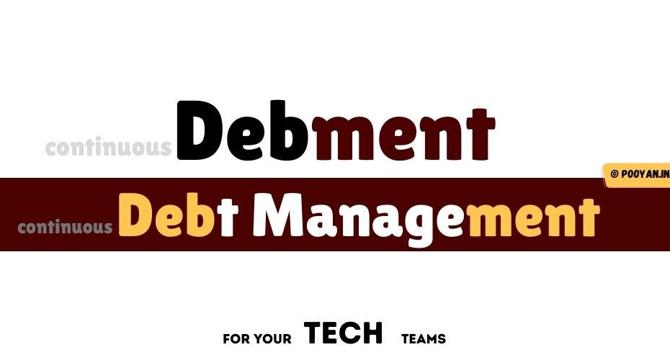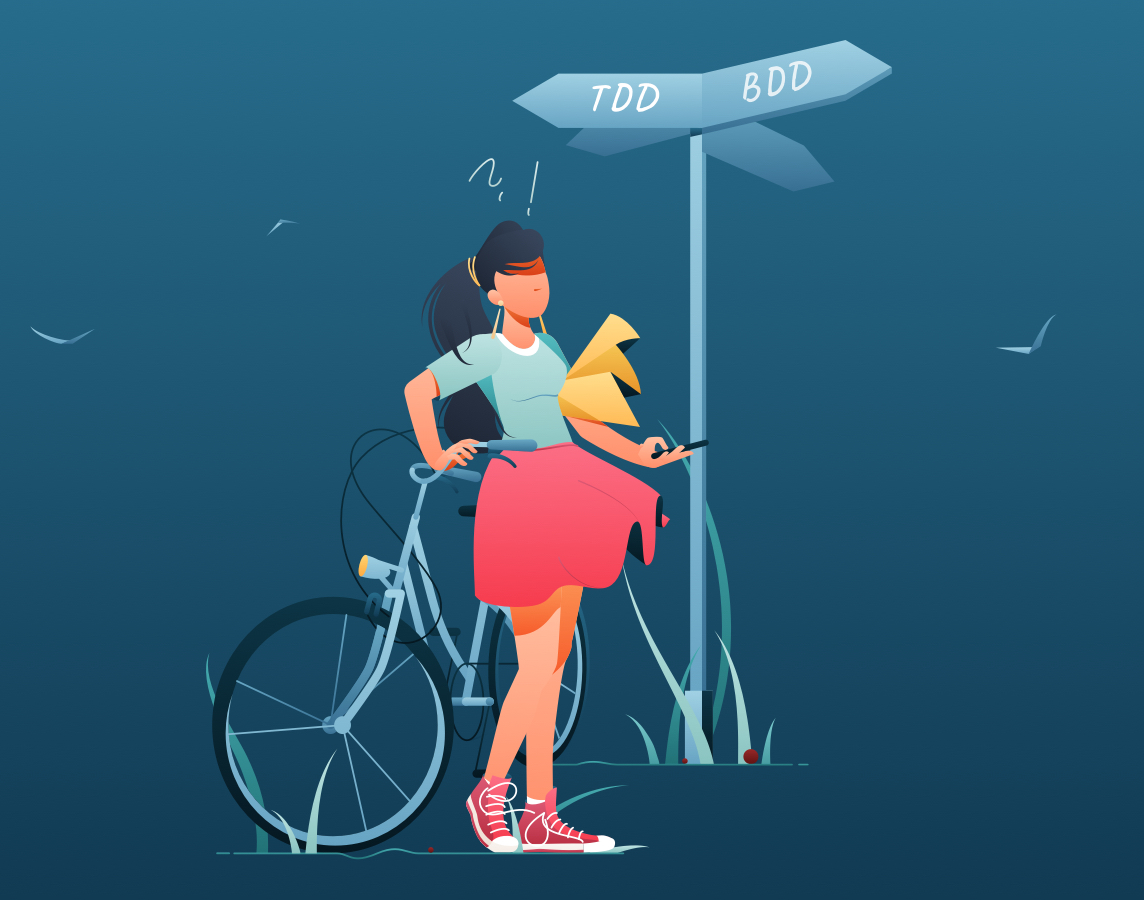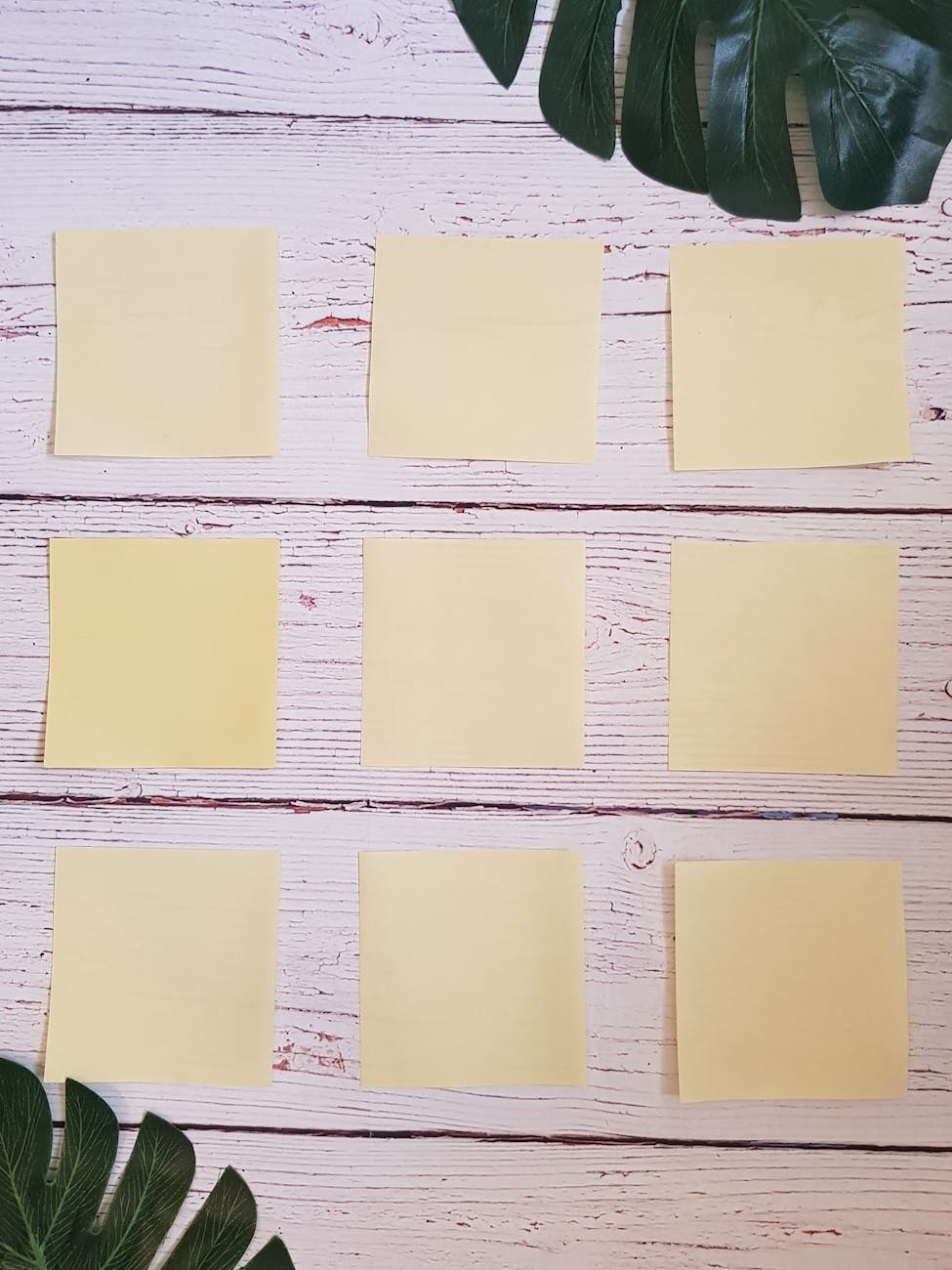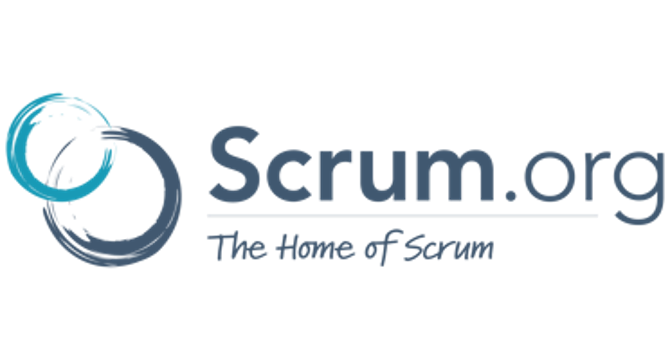Agile Methodology News
Medium
77

Image Credit: Medium
Week 7 of Product Management Foundations for Designers
- In the fast-paced world of product development, the Minimum Viable Product (MVP) is key to testing ideas quickly and efficiently.
- Designers focus on creating an MVP that balances usability and feasibility, with a goal of learning from real users as fast as possible.
- Key elements of an MVP include being minimum, viable, and a real product that users can interact with.
- An example of a successful MVP is Dropbox, which tested demand for their product through a demo video and gained thousands of sign-ups.
Read Full Article
4 Likes
Medium
18

Image Credit: Medium
CI/CD2 & Continues Debment: How to deal with technical debt
- Technical debt in software development can arise from code, testing, architecture, tooling, inefficient processes, knowledge gaps, and more.
- Misunderstandings around Scrum and Lean methodologies can lead to technical debt accumulation, hampering project success.
- Issues such as short-term thinking, overemphasis on features, lack of testing and refactoring, absence of standards, and poor documentation contribute to technical debt.
- Separation between business and development, lack of trust, and reactive mindset also impact technical debt management negatively.
- Ignoring technical debt can result in project slowdown, loss of reputation, customer dissatisfaction, and potential business failure.
- Approaches to addressing technical debt include cleanup sprints, sunsetting projects, and incremental refactoring, with the latter being the most effective.
- Continuous Debment (CD2) integrates debt management into daily tech processes by emphasizing proactive debt reviews, incremental refactoring, and team ownership.
- Measuring the effects of technical debt through metrics like time to deliver features, system performance, employee turnover, and customer satisfaction can help in understanding its impact.
- Managing technical debt involves trusting the team, integrating debt management into daily development, enforcing coding standards, and continuously evaluating and addressing debt.
- CI/CD2 is highlighted as a mindset rather than a tool, emphasizing the importance of incorporating technical debt management into everyday development practices for project sustainability.
Read Full Article
1 Like
Medium
420

Image Credit: Medium
: #ProductOwner’s
- Being a product owner requires resilience and adaptability.
- Unexpected shifts in priorities can upend well-laid product plans.
- Risk management and flexibility are crucial in product planning.
- A roadmap is only as good as its ability to evolve with change.
Read Full Article
25 Likes
Medium
114

Image Credit: Medium
A Roadmap to Independence: Iterating for the Future
- The Sivas Congress in Anatolia faced the monumental task of uniting diverse stakeholders towards the vision of an independent Türkiye amidst the collapsing Ottoman Empire.
- The leaders at Sivas prioritized unifying resistance against partition as the crucial first step, akin to refining a product backlog for a successful launch.
- Mustafa Kemal Atatürk and his allies navigated challenges by creating alignment through transparency, relentless dialogue, and a compelling vision at the Sivas Congress.
- They focused on launching their MVP, the National Pact (Misak-ı Milli), as the first concrete step towards independence, setting a clear direction and purpose.
- The Sivas Congress exemplified agile leadership, adapting to real-time challenges while staying focused on the ultimate goal of establishing a fully independent Turkish Republic.
- Their resilience, innovation, and adaptability showcased the importance of remaining agile amidst changing conditions, much like successful product teams in dynamic markets.
- The ultimate success of the Sivas Congress came with the birth of the Republic of Türkiye in 1923, demonstrating the transformative power of iterative processes and unwavering persistence.
- The journey from scattered resistance to a unified state mirrors the iterative process of developing a successful product, emphasizing the need for understanding user needs and stakeholder alignment.
- Lessons from the Sivas Congress, such as the importance of vision, stakeholder management, agility, and persistence, are valuable for product owners and leaders guiding organizational changes.
- The article concludes by highlighting the role of product owners in shaping the future through perseverance, iteration, and commitment to the vision, drawing parallels to the leaders at Sivas who shaped history.
Read Full Article
6 Likes
Discover more
- Programming News
- Software News
- Web Design
- Devops News
- Open Source News
- Databases
- Cloud News
- Product Management News
- Operating Systems News
- Computer Engineering
- Startup News
- Cryptocurrency News
- Technology News
- Blockchain News
- Data Science News
- AR News
- Apple News
- Cyber Security News
- Leadership News
- Gaming News
- Automobiles News
Medium
439

Image Credit: Medium
T-Shirt Sizing in Agile & Project Management: A Simple Yet Powerful Estimation Technique
- T-Shirt Sizing is a simple and effective estimation technique in Agile and project management.
- Traditional estimation techniques like story points or time-based estimates can be rigid and overly detailed.
- T-Shirt Sizing categorizes tasks as Small, Medium, or Large, providing a faster and more intuitive estimation process.
- This technique offers speed, simplicity, and adaptability, making it a game-changer in high-level estimations.
Read Full Article
26 Likes
Testim.io
402

Image Credit: Testim.io
TDD vs BDD: Your Pocket Cheat-Sheet
- TDD (Test Driven Development) and BDD (Behavior Driven Development) are two widely used software development techniques where automated tests are key.
- TDD focuses on writing tests before production code, aiming for simpler, maintainable design through isolated unit testing.
- TDD workflow consists of writing a failing test, executing existing tests, writing production code to pass the test, and optional refactoring.
- TDD comes in different styles like inside-out TDD and outside-in TDD, each with its benefits and drawbacks.
- Unit tests in TDD ensure speed, determinism, and minimal dependencies for efficient and effective testing.
- BDD (Behavior Driven Development) is an extension of TDD, focusing on behavior over tests, promoting collaboration, and communication within teams.
- BDD workflow involves writing behaviors in plain English, converting them into scripts, implementing functionality, and optional refactoring.
- TDD and BDD are not testing methodologies; they are software development techniques leveraging automated testing for benefits like simpler design and fewer defects.
- The main differences between TDD and BDD lie in the starting point (test vs. behavior), collaboration scope, and end-user vs. developer focus.
- The choice between TDD and BDD depends on the nature of the application, with BDD suiting behavior-driven apps and TDD more fitting for libraries or APIs.
Read Full Article
24 Likes
Medium
86

Image Credit: Medium
Nothing breaks a developer’s soul like seeing the same retro item for the 10th time.
- Change doesn’t have to be massive to apply the Krüger Model.
- Every change starts with a clear diagnosis and objectives.
- Change requires a plan, convincing the team, and adaptation.
- Applying the Krüger Model can help change team culture without organizational power.
Read Full Article
5 Likes
Scrum-Master-Toolbox
279

BONUS: How to create psychological safety at work with Mehmet Baha
- Mehmet Baha, a psychological safety expert and one of Facebook's first European employees, shares insights on creating psychological safety at work.
- He introduces the '16-32-64' framework, which combines cognition, emotion, and practice to foster psychological safety in the workplace.
- He debunks misconceptions about psychological safety and highlights its importance in driving employee happiness, reducing turnover, and increasing productivity.
- Baha discusses practical tools, such as 'Movers, Movables, Immovables' and the 'Green Card' technique, for immediate implementation.
Read Full Article
16 Likes
Scrum
86

Image Credit: Scrum
Scrum Masters are Glue Roles
- The Scrum Master and Agile Coach roles are often referred to as glue roles.
- Glue roles connect different parts of an organization, ensuring smooth communication, collaboration, and integration.
- To be effective as glue, adapt your approach, give time for things to develop, find the right balance of involvement, make your impact visible, and regularly assess and reinforce where necessary.
- The glue metaphor relates to the roles of Scrum Masters and Agile Coaches in connecting teams and facilitating change.
Read Full Article
5 Likes
Hackernoon
92

Image Credit: Hackernoon
The Most Effective Way to Run a Sprint Retrospective
- Sprint Retrospectives are useful when done well, but can be a waste of time if not done effectively.
- To have effective Sprint Retrospectives, adhere to the basic rules of setting up a good scrum team.
- A Start, Stop, Continue Retrospective focuses on three questions: What should we start doing, stop doing, and continue doing?
- This approach is action-oriented, cuts through the noise, and leads to actionable changes in team behavior.
Read Full Article
5 Likes
Scrum
109

Image Credit: Scrum
The Art of the Agile Forecast: 4 Core Practices
- Forecasting in Agile requires a balance between enabling effective investment decisions and fostering agility and learning.
- Four core practices of Agile Forecasting help navigate this balance effectively.
- The importance of defining success indicators beyond deadlines, budgets, and scope is emphasized.
- Re-Forecasting, the Agile Rhythm, involves revisiting forecasts with empirical data and new learnings.
- Decreasing precision in forecasts can increase accuracy by allowing space for learning and adaptation.
- Bracketing forecasts based on probability or likelihood can enhance agility and communication.
- Aligning precision and bracketing with the time horizon of the predicted event aids in refining forecasts as the event approaches.
- Using Monte Carlo Simulation and historical data can provide insights into the likelihood of various outcomes.
- Changing the conversation with stakeholders by introducing bracketed forecasts can lead to more collaborative engagements.
- Adapting forecasting approaches based on the time horizon helps increase agility while maintaining clarity in communication.
Read Full Article
6 Likes
Scrum
50

Image Credit: Scrum
Sharpening Your Product Value: Lessons from the Sharks and Dragons
- Entrepreneurs pitching their businesses in TV shows like Sharks and Dragons often fail to know their numbers.
- Knowing key metrics and how to improve them can elevate the ability to deliver value.
- Pick 5-10 key metrics that provide insight into your product's performance.
- Apply the empirical mindset of transparency, inspection, and adaptation to continuously improve product value.
Read Full Article
3 Likes
Alvinashcraft
18

Image Credit: Alvinashcraft
Dew Drop – February 21, 2025 (#4367)
- The Dew Drop for February 21, 2025 contains a variety of articles covering topics like .NET MAUI, AI, Web Development, Visual Studio, Design, Database, and more.
- From .NET MAUI Performance Features to building AI-Powered apps using WinUI Scheduler, the top links feature a range of informative articles.
- In Web & Cloud Development, discussions include TypeScript in Node.js, transitioning from Create React App to Vite, and deploying WebJobs to Azure Container Apps.
- AI-related articles talk about Doc-Powered AI Assistant, ethical concerns around Generative AI, and AI Agents for beginners.
- Design, Methodology & Testing topics cover Developer Experience trends and leveraging GitHub Copilot Workspace Extensions.
- The Mobile, IoT & Game Development section touches on Amazon's decision to shut down its Android Appstore and introduces the Raspberry Pi team.
- Podcasts featured in the Dew Drop discuss aspects like Engineering Excellence, Azure Security, AI Models, and empathy in engineering management.
- Community & Events section highlights software engineering job openings, developer community engagement on content moderation, and the Opengrep launch as a free fork.
- Database-related topics include SQL Server Performance, TLS 1.2 for Azure Cosmos DB, and updates on Azure Database for MySQL.
- In SharePoint, M365 & MS Teams, articles detail getting started with Copilot and ClipChamp's video creation capabilities.
- Miscellaneous news covers insights on DOGE currency, sea level rise due to melting glaciers, and Microsoft's updates like major OCR upgrade for Snipping Tool in Windows 11.
Read Full Article
1 Like
UX Design
402

Image Credit: UX Design
A framework for better UX capacity planning
- The article discusses a framework for improving UX capacity planning to align on the level of UX effort needed for projects.
- It addresses common struggles in UX design and research, such as lack of alignment on research and design effort, and capacity planning.
- The framework aims to set realistic expectations, empower UX teams, and determine the level of discovery, iteration, and execution needed.
- It introduces the Pendo Research Effort Framework and the UX Effort Framework 2.0, which focus on research and design effort levels.
- The Research Effort levels include Ship & Measure, Research Light, Research Medium, and Research Heavy, each catering to different project requirements.
- The Design Effort Levels consist of Consult Only, Design Light, Design Medium, and Design Heavy, based on factors like risk and complexity.
- The article emphasizes the importance of aligning teams, setting expectations, and tracking UX work using project management tools like Jira.
- It suggests a structured approach starting from project planning to project kickoff, adding UX stories to Jira, and quarterly planning.
- The framework helps prioritize problems and outcomes over features, enabling realistic expectations and better communication of UX capacity.
- In conclusion, the article provides a comprehensive guide on utilizing the framework for effective UX capacity planning and project execution.
Read Full Article
24 Likes
Scrum-Master-Toolbox
32

Substack Week: AI in Product Management, Enhancing Product Development Through Artificial Intelligence with Toni Dos Santos
- Toni Dos Santos discusses how AI is revolutionizing product management, automating tasks, and aiding decision-making to enhance product development.
- Starting his career in the music industry, Toni transitioned to banking and later explored AI in product management after the launch of ChatGPT in 2022.
- One key area where AI can assist product managers is in generating user stories based on given product descriptions, streamlining the process for teams.
- AI serves as a valuable tool to analyze user feedback, extract key pain points, and validate qualitative findings with quantitative data.
- Toni emphasizes that AI is crucial for product leaders in summarizing data, defining strategies, creating alignment, and generating strategic options.
- To incorporate AI effectively, product managers are advised to engage in hands-on experience, understand AI limitations, and focus on augmentation, not replacement.
- Toni recommends resources for further study, including books, newsletters, and AI courses, to deepen understanding and practical application of AI in product management.
- He recommends starting with practical experimentation, recognizing AI's error rate, treating AI interactions as conversations, and identifying areas where AI can augment human judgment.
- Toni Dos Santos, with over 15 years of experience in product strategy, specializes in accelerating time-to-market, sustainable growth, and aligning product strategies with business objectives.
- Listeners can connect with Toni Dos Santos on Substack for more insights on AI in product management and development.
Read Full Article
1 Like
For uninterrupted reading, download the app